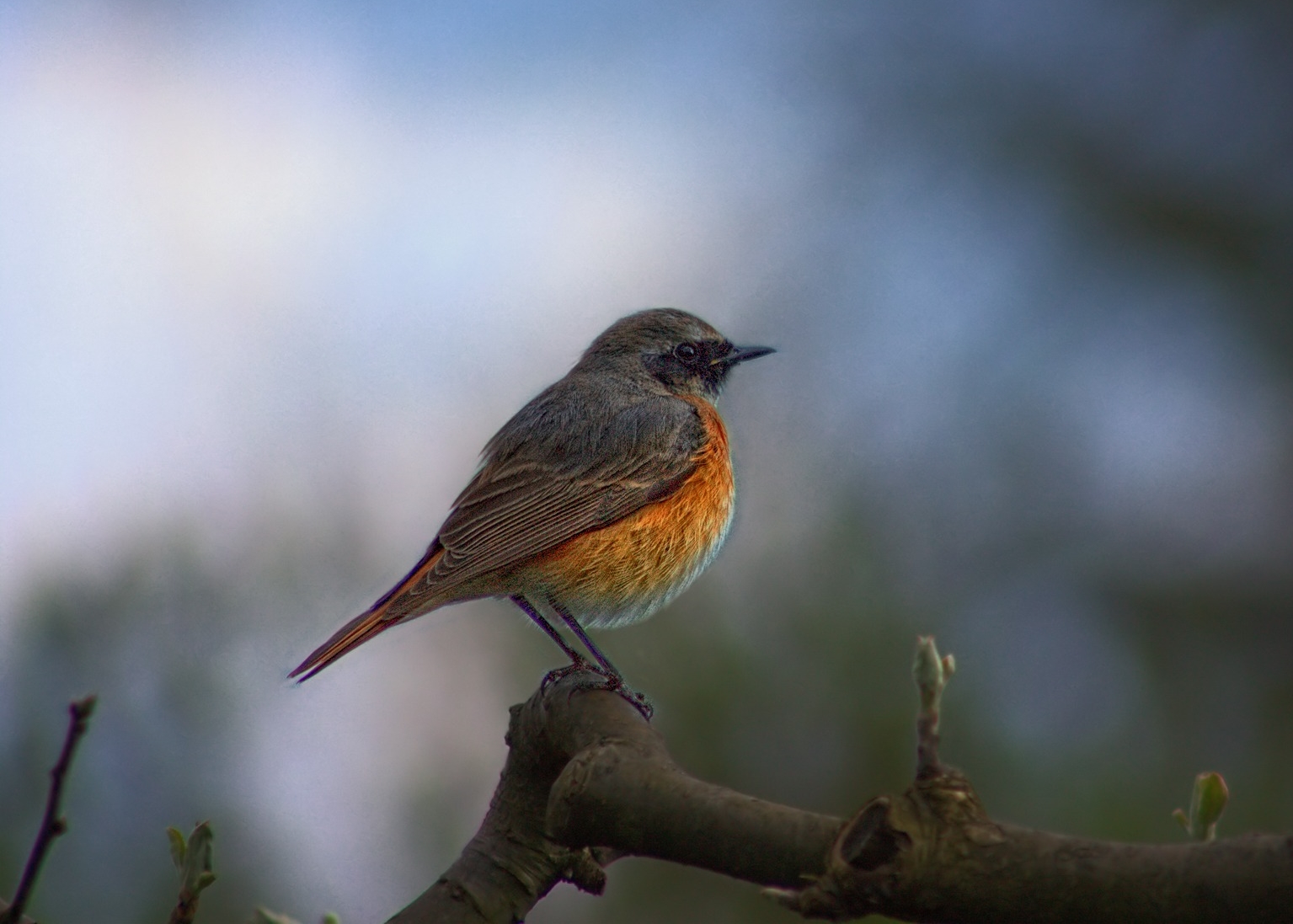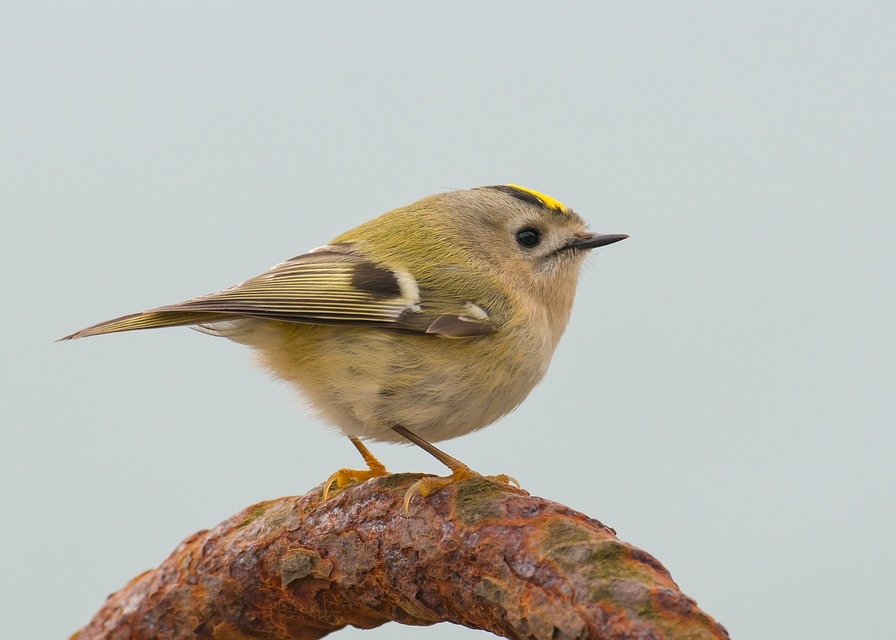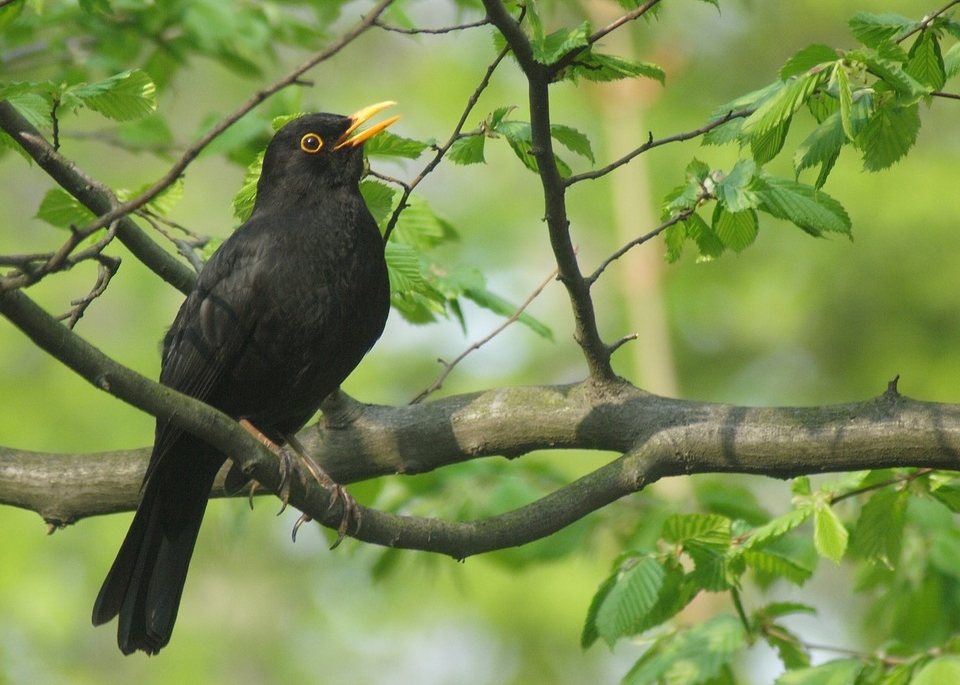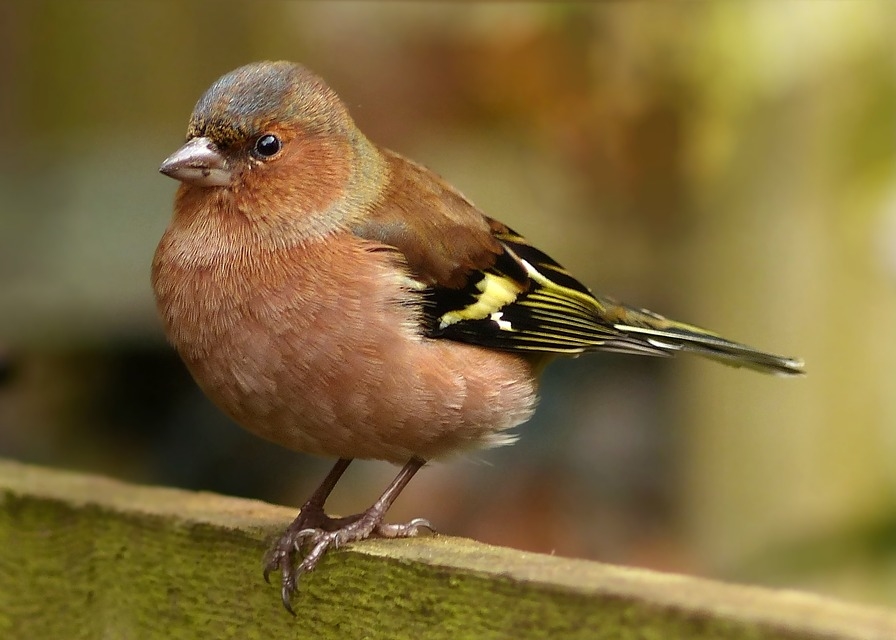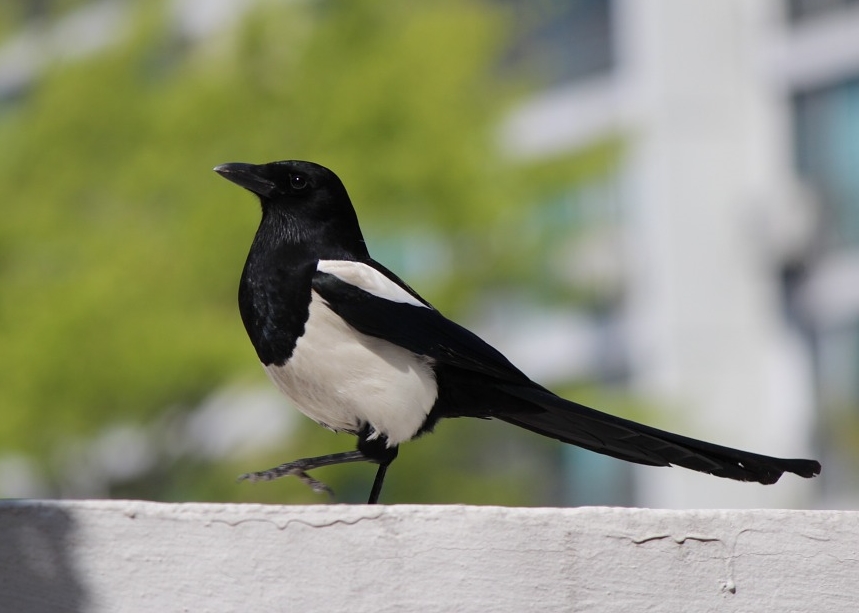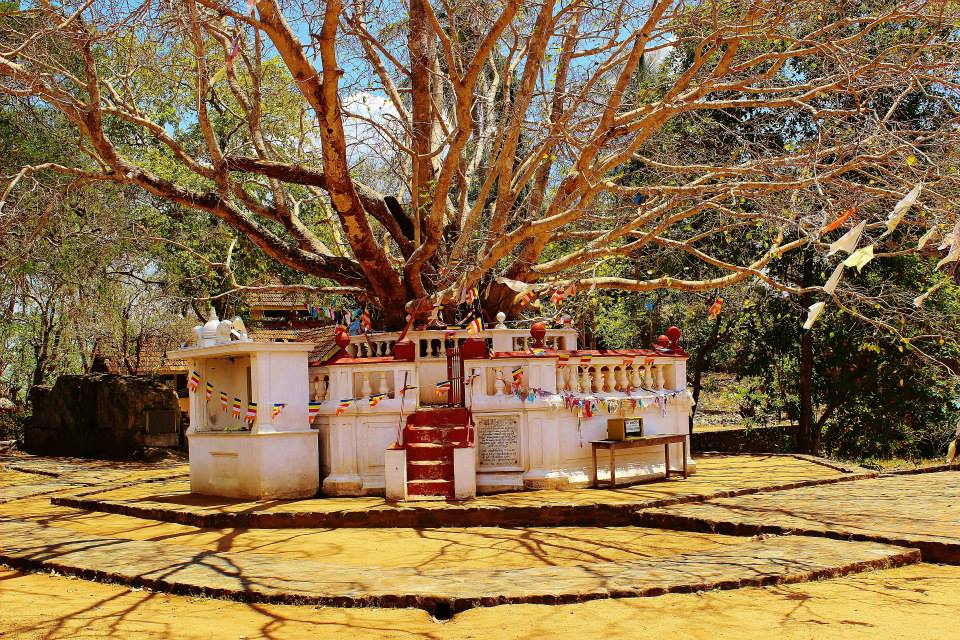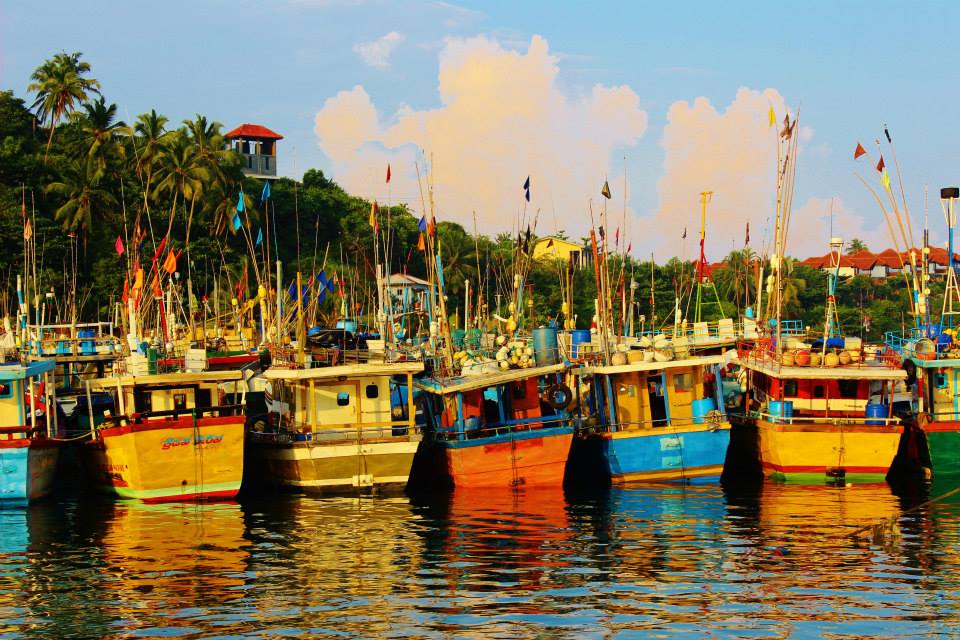After spending the best part of two years living in the small landlocked African country of Rwanda, it's hard not to notice the wide-array of flora and fauna that surrounds me in my everyday life.
Recently, I wrote an article on some of the most commonly spotted and impressive bird species found in Rwanda's capital city, Kigali. With the country being well-renowned for its abundance of bird species, the post attracted a rather large following from both professionals in the wildlife conservation field and city dwellers.
Before moving to Rwanda, I spent four-and-a-half years living in one of the most beautiful cities in Europe, Prague. While there may not be such a large group of bird enthusiasts in the Czech capital, it was very apparent to me that Czechs are very 'outdoorsy' people who would likely take some interest in the wildlife that surrounds them in the city.
While most of us are busy joining in the rat race that seems to dominate our lives, the plethora of wildlife residing and thriving in and around the city of 100 spires tends to evade us. With that said, this article aims to draw attention to our feathered friends, and what better time to explore Prague's wild side than the turn of Spring!
Blue Tit
A common and widespread pretty little bird with blue cap, wings and tail. They also exhibit a green back, yellow underparts, white cheeks, and a black line through the eye. Much of its food is located on outer twigs and branches where it frequently hangs upside down to feed. They live in a variety of habitats but are most often spotted in parks and gardens.
Mute Swan
One of Europe's largest birds, the Mute Swan is most commonly spotted along the banks of the Vltava river. They have a rounded head and long, graceful, S-shaped neck and pointed tail. This imposing water bird also showcases a bright orange bill with black knob at the base. They feed mostly on aquatic plants and other vegetation. A fairly silent bird (hence the name), but will make a loud hiss and other snorting sounds when angry.
Redstart
Similar in size to the Eurasian Robin but with slimmer and longer wings and a longer tail that quivers up and down. Like many birds, they are a sexually dimorphic species with the male having more striking plumage than the female. Both have a bright-orange red tail and rump. In the spring, the male exhibits blue/grey upperparts, black face and throat, white forehead and orange breast and flanks. They're not the most easily spotted species on this list, but can be observed in parks and gardens.
Kestrel
The first bird of prey on this list and probably the most common and widespread in Prague. From balconies to bell towers, the Kestrel is a small raptor that has been observed nesting in many elevated spaces in the city. They are renowned for their ability to hover when hunting their prey, which includes small mammals such as shrews, mice, and voles. Males and females are similar in appearance, with the former sporting a grey head and tail.
Bullfinch
A plump little bird with a large head, thick neck, and short black, bulbous-bill. Their cap, wings, and tail are all a glossy black in contrast to a gleaming white rump. However, their most distinguishing feature is the brightly coloured lower face and breast, with males sporting a beautiful rose pink plumage and females pinkish-grey. These birds are rather secretive and seldom seen far from cover. They are regular visitors to gardens and orchards, however.
Great-spotted Woodpecker
Six different woodpecker species have been recorded in the city of 100 spires, with the Great-Spotted Woodpecker being one of the most common. A common resident of both urban and rural gardens, they are a medium-sized black-and-white woodpecker with dirty white underparts and crimson red feathers under its short stiff tail. The male also has a small crimson patch on the back of its head. They are most often spotted perched vertically on trees, both coniferous and deciduous.
Goldcrest
At a mere 9cm, this plucky species is Europe's smallest bird. The Goldcrest is a tiny, rather round looking species with small rounded wings and large eyes. Both the male and female have a rather dull green plumage all over with the exception of the crown patch which is bright yellow bordered by black stripes. The males yellow patch becomes an orange-red when displaying. They can be found in most parks, and mature gardens with large trees.
Pochard
This diving duck exhibits a short neck and very round head. Another sexually dimorphic species with the male sporting a rusty red head and neck, black breast and tail contrasting against a pale grey body. The female is mostly a dull grey-brown with pale cheeks and neck. Pochards are most commonly spotted along the banks of the Vltava and are quite happy around human habitation. They can often be seen in flocks along with Mute Swans, Cormorants, and Tufted Ducks close to the Charles Bridge.
Eurasian Jay
Probably the most conspicuous species of the crow family, the Eurasian Jay is a brightly coloured corvid that is more common and widespread than one might think. They exhibit a pinkish-fawn body, rounded head with a small pale streaked crest that can be raised in display or when they are excited, and a small black 'moustache'. Jays also possess a distinctive electric blue wing patch that is barred with black. They are essentially a woodland bird but are frequently spotted in parks, cemeteries, and mature gardens.
Black-headed Gull
One of the noisiest birds and probably the most common and widespread of gulls in Prague. The Black-headed Gull has slim, pointed wings with obvious white stripes along the front edge. In late winter and spring, both males and females exhibit a dark chocolate brown hood behind the eye. In spring, the bill and legs are wax red but appear duller at other times. They can be spotted mostly around water bodies including the Vltava river, but will frequent in built-up areas too.
Long-tailed Tit
One of the prettiest birds you'll find in Prague and a fairly common and widespread city dweller too. They are similar in size to the tiny Goldcrest, but their long, narrow tails make them a bit larger. Long-tailed Tits are tiny round birds with a stubby black bill. They are pinkish-brown above, pinkish-white below, with dark marks on the sides of the head and a white crown. Their small rounded wings are mostly black. They are a highly sociable species and are commonly spotted in groups around parks and gardens.
Woodpigeon
Prague's largest pigeon and with an increasing population, the Woodpigeon has a small head, broad wings, longish tail, and bulging chest. The adult is blue-grey with white crescent on wing, black band on tail and white patch on the neck. The neck also has a green and purple sheen and the breast has a pink flush, making it one of Europe's more colourful pigeons. They can be found in just about any habitat in Prague, but prefer areas where they can roost in trees.
Kingfisher
One of Europe's most colourful and celebrated birds, the Kingfisher is a beautiful little bird that can be highly elusive. That said, they have been spotted in Prague along the more vegetated areas of the Vltava river where they'll often perch on reeds as they look out for their next meal. These stunning birds sport a large head with a dagger like bill. The underparts and cheeks are orange with the upperparts electric blue or oily green depending on lighting. They also exhibit white throat and neck patches.
Greenfinch
A chunky looking finch with large head, rather short, slightly forked tail and heavy looking conical bill. The male is olive-green with a brighter back and rump and bright yellow patches on the wings and tail. The female is slightly duller than the male, with less yellow and slightly streaky upperparts. They can usually be observed feeding in small groups and will often join other finches and sparrows in large communal roosts. Greenfinches are regular visitors to gardens and Prague's beautiful gardens.
Peregrine Falcon
The second raptor on the list, the Peregrine falcon is famous for being the fastest bird in the world. They can be observed mostly in flight, where they ascend high in the sky before stooping quickly to catch prey including Feral Pigeons, Black-headed Gulls, and Blackbirds. This large and powerful bird of prey has blue-grey upperparts and dark blue wings and head. The crown is black and has a conspicuous 'moustache' contrasting with white face, giving it a hooded look. They can be found almost anywhere in the city, with one pair recorded nesting on Týn cathedral at the Old Town square.
House Sparrow
One of the most common and widespread birds in Europe but with a population declining at an alarming rate. The House Sparrow is a small plump bird with thick bill, which becomes black when breeding, and rather short legs. The males has a chestnut brown head with a grey crown, pale grey underparts, grey cheeks and a black bib. Females have streaked backs, pale underparts and cheeks, pale brown crown and often a distinct straw-coloured line above and behind the eye. They are historically associated with human habitats and use buildings as nest sites.
Wren
Europe's joint second smallest bird (along with the Firecrest), the Wren is a very frequent visitor to gardens. Tiny, dumpy and energetic birds that are constantly on the move. They possess a long thin bill and rather large feet. Their small tails are often cocked above the back, and their short neck gives the appearance of a small brown ball. They can be spotted continuously searching for food but can be fairly inconspicuous due to their small size and dull colouring. Wrens are most frequently observed among bushes, vegetation and small crevices in tree trunks.
Great Tit
The largest member of the tit family, the Great Tit exhibits a large black cap, collar and throat, and a black line running down the yellow breast and belly. Their cheeks are white, back is greenish, and wing are grey-blue with a single white bar. Although it sometimes occurs in small flocks an mixes with other species, it is less social than some other members of the tit family. They can be seen mostly in and around hedgerows and trees in residential gardens and parks.
Mallard
The most common and widespread duck in Europe, the Mallard is a familiar bird to most of us. Sexes are dissimilar, with males sporting a dark green head, yellow bill, white neck ring, purple-brown breast, mainly grey body, and black curly upper tail feathers. The female is brown with darker mottling, dark crown, dark eye stripe, pale breast, orange bill and legs. Mallards are often seen in small flocks in and around the Vltava river.
Blackbird
Slightly larger than a Starling, the Blackbird is plump with a round head and medium-length tail. The male is matt black with a bright yellow bill and ring around the eye. The female is dark brown with darker wings and tail. They tend to feed under or close to cover and can be observed turning over leaves to search for food. Blackbirds are a highly adaptable species which is why they are so common and widespread. They are primarily a woodland bird but can be frequently spotted in gardens and parks.
Common Buzzard
Another commonly spotted raptor in and around Prague and the largest of the three raptors on the list. The Common Buzzard is a large thickset bird with wide rounded head, short neck, broad rounded wings with 'fingered' ends and a rather short, broad tail. They are most often observed in flight where they will soar and glide with head hardly extending in front of the wings. They'll frequently hang in the air, almost motionless as they look for prey.
Green Woodpecker
The second woodpecker on the list, and along with the Great-spotted Woodpecker, the species most commonly spotted in Prague. They have heavy looking bodies, short tails, and a strong, rather long bill. Their upperparts are green-grey in colour, with dullish underparts, vivid yellow-green rump and most distinctively, a bright red rump and crown. The 'moustache' mark of the male is dull red while that of the female is black. The Green Woodpecker is renowned for its laughing 'queu, queu, queu' call. It is not uncommon to see these large woodpeckers feeding on garden lawns.
Chaffinch
About the size of a House Sparrow, the Chaffinch is a small plump finch with medium-sized bill, slightly peaked crown, rather long wings, white shoulder-patch and a white stripe in its wing. Males and females have different plumage with the former sporting a blue-grey head, pinkish-brown breast and cheeks, and chestnut back. The females are a paler yellowish-brown. They can be found mostly in gardens and parks where they perch in trees and bushes and are generally observed feeding on the ground.
Feral Pigeon
Not everyone's favourite and considered a pest by many. The Feral Pigeon is smaller than the Woodpigeon and can vary greatly in plumage. Actually, they vary from pure white to almost black, but include plumages that are various shades of grey and brown. Some of the feral population resemble their Rock Dove ancestors. They are a highly sociable bird that can be found among just about any human habitation from the bustling Wenceslas Square to the quieter parks in and around Prague.
Nuthatch
This pretty little bird is about the size of a Great Tit and resembles a small woodpecker. The Nuthatch is plump with a long black pointed bill, rather large head, and short neck, short stiff tail, and short strong legs. They exhibit soft blue-grey upperparts, buff underparts, chestnut flanks, and broad black stripe running through the eye toward the back of the head. Nuthatches are a fairly elusive species but are most frequently spotted moving up and down tree trunks and branches in short jerky movements.
Tufted Duck
Slightly smaller than a Mallard, the Tufted Duck is arguably the nicest looking of all duck species found on the Vltava river. These beautiful diving ducks have short necks, rounded heads, and relatively large, broad bill with a broad black tip. The male is glossy black with white flanks and belly and a powder blue bill. Females are more brown in colour but both sexes sport impressive golden eyes. They get their name for their long tuft of feathers on the back of their heads, which can often be seen waving around in the wind.
Jackdaw
A fairly common resident of Prague and a small member of the highly intelligent crow family. The Jackdaw is a neat, stocky bird that is mainly black, but with a slight purple sheen on its back and head and a grey 'hood'. The grey of the males 'hood' tends to be paler than that of the female. They are usually spotted in pairs or flocks and will often join Rooks and Starlings on rooftops. They find their food mostly on the ground but will also feed on insects and other invertebrates on trees.
Spotted Flycatcher
The Spotted Flycatcher is a summer migrant so don't waste any time looking for this species during Prague's cold, harsh winters. When these pretty little birds do arrive to central and other parts of Europe, they can be spotted in mature gardens and parks. The dark bill is long and wide, the head quite rounded and the wings and tail rather long. They have grey-brown upperparts, off-white underparts, streaks on the breast and fine streaking on the crown. They feed mainly on flying insects including larger flies and butterflies.
Robin
One of Europe's darling birds, the Eurasian Robin is one of the most commonly spotted species in gardens and parks around Prague. This familiar bird has a body shape that varies from rotund to sleek. The upper parts are olive-brown with face, breast, and neck a bright orange-red. Robin's are very comfortable around human habitats and are notoriously fierce when protecting their chicks. On the ground, they move in a series of hops, sometimes with wings drooped.
Magpie
The Magpie is a medium-sized member of the crow family that appears black and white with a very long, wedge-shaped tail. The crown of the head is rather flat and bill medium-sized but very powerful. The body is black with an iridescent blue-green shade to the black wings and tails. They are often seen perched on top of a bush or tree, but can sometimes be spotted on man-made structures such as pylons. On the ground they walk or hop, usually with their tails lifted above the level of the back.
Fieldfare
One of the lesser-known bird species in Europe yet one of the most widespread. The Fieldfare is a large, plump thrush with rather long tail. They have grey heads with dark streaks on the crown, long pale-grey rump, chestnut back and wings, and black tail and flight feathers. The breast is a yellow-orange and is heavily spotted. In the winter, they can be observed feeding along hedgerows and in orchards. They will sometimes travel with, and feed alongside other thrushes and Starlings.
Grey Wagtail
Colourful and graceful little birds with a very long tail that is constantly 'wagging'. Both sexes sport bright egg-yellow under the tail. The male has a yellow breast, blue-grey upperparts, white stripe over the eye and black throat. Females are quite similar but have pale throats. Grey Wagtails are not the easiest birds to spot and are usually seen singly or in pairs. They can be observed in most habitats, but are usually found in areas quite close to sources of water.
Crested Tit
Another highly elusive species on this list but a great bird to observe. The Crested Tit has a brown back and pale buff underparts. Its face is off-white with a black bib, speckled forehead and crown and pointed crest. They exhibit a blackish mark through the eye and curving round the cheeks. They are active and restless feeders, constantly moving as it searches for food by hanging on tree trunks or upside down as it searches the underside of branches.
Grey Heron
Keep your eyes peeled around the quieter areas of the Vltava river and you might just spot this large wader. Grey Herons are large, with a long neck, long legs, and dagger-like bill. Their heads are white with white centre to the black crown that ends in a long, black wispy crest. The whitish neck has rows of black marks and the back is blue-grey in colour. The Grey Heron is usually seen solitary on the ground, near shallow edges of lakes and rivers.
Song Thrush
Along with the Blackbird, the Song Thrush is one of the most abundant thrushes in Europe and the Czech Republic. These stocky birds have relatively short tails, medium-brown upperparts and small black spots all over a buff breast and flanks. They stand rather upright and flick their wings when excited. Song Thrushes have a far carrying musical song comprising a series of short phrases, each repeated 3-5 times. Individuals may have a repertoire of up to 100 phrases. Expect to see these vocal birds in the parks and gardens around the capital.
Starling
One of Europe's most common and widespread species, the Starling is actually quite a pretty bird upon closer inspection. They are fairly stocky, with a pointed yellow bill that is darker during the winter months. Their feet also change from brown to pink in the spring. Their plumage is mostly black with a purple-green sheen and tiny white spots. Starlings have a rather jaunty walk and can often be observed on garden lawns where they probe for worms and other invertebrates.
Rook
Not a particularly good-looking bird, the Rook is the last species on the list and yet another member of the crow family. They have a purplish-black plumage and bare greyish skin at the base of the bill. Their foreheads are quite flattened and they have a rather peaked crown. Feathers appear 'looser', especially at the top of the legs, giving it a 'baggy trouser' appearance. They frequent mainly around tall trees and feed mostly on the verges of roads and rubbish tips in and around Prague.
If you're struggling to spot some of these species, one surefire way to attract garden birds such as Blue Tits, Robins, Chaffinches and Wrens is to hang up bird feeders in your outdoor spaces! There are also many other impressive bird species that can be found in and around Prague including Black Woodpeckers, Sparrowhawks, Chiffchaff and the Short-toed Treecreeper!
Special thanks to Pexels and Pixabay for some of the amazing free images used in this blog post.



